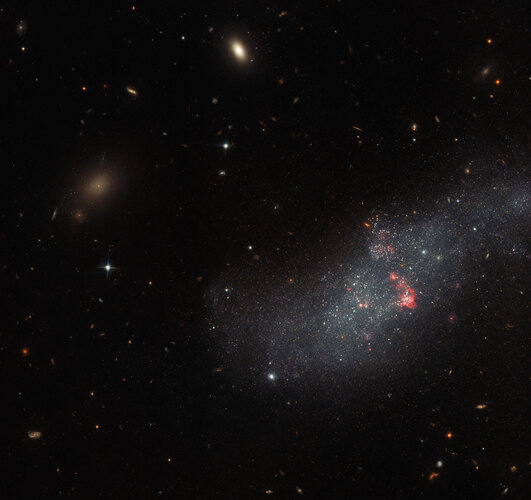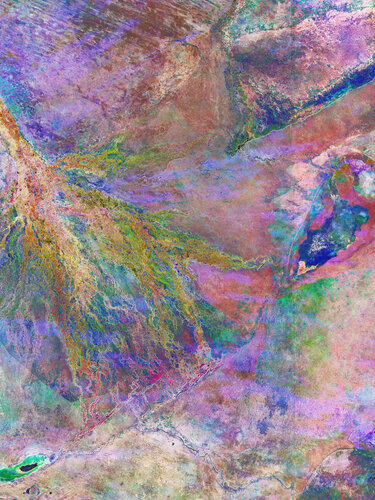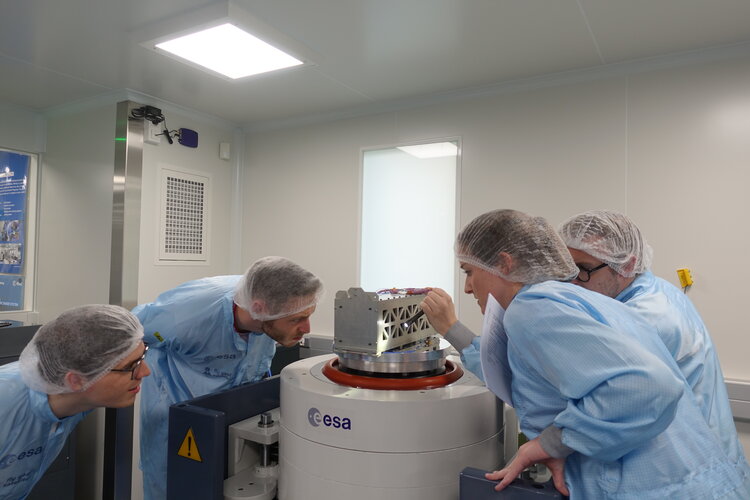Rocket Lab claims 'mission success' after deploying 2 commercial satellites into orbit
Friday, 17 March 2023 13:18 Rocket Lab confirmed Thursday that it has successfully deployed its payload of two commercial satellites into orbit.
The mission "Stronger Together" carried two Synthetic Aperture Radar commercial satellites from U.S. manufacturer Capella Space into orbit on Thursday evening. The Electron booster lifted off shortly after 6:30 p.m. EST from Launch Complex 2 at the Mid-Atlantic Regional S
Rocket Lab confirmed Thursday that it has successfully deployed its payload of two commercial satellites into orbit.
The mission "Stronger Together" carried two Synthetic Aperture Radar commercial satellites from U.S. manufacturer Capella Space into orbit on Thursday evening. The Electron booster lifted off shortly after 6:30 p.m. EST from Launch Complex 2 at the Mid-Atlantic Regional S NASA begins building its first robotic Lunar rover
Friday, 17 March 2023 13:18 NASA's first robotic lunar rover is officially coming together and the team building it is over the Moon.
"I'm super excited...it makes me very proud of all the time and effort the team has invested to get this far," said David Petri, system integration and test lead for the Volatiles Investigating Polar Exploration Rover (VIPER). The team recently began assembling the 1,000-pound rover at
NASA's first robotic lunar rover is officially coming together and the team building it is over the Moon.
"I'm super excited...it makes me very proud of all the time and effort the team has invested to get this far," said David Petri, system integration and test lead for the Volatiles Investigating Polar Exploration Rover (VIPER). The team recently began assembling the 1,000-pound rover at Remains of a modern glacier found near Martian equator
Friday, 17 March 2023 13:18 In a groundbreaking announcement at the 54th Lunar and Planetary Science Conference held in The Woodlands, Texas, scientists revealed the discovery of a relict glacier near Mars' equator. Located in Eastern Noctis Labyrinthus at coordinates 7 degrees 33' S, 93 degrees 14' W, this finding is significant as it implies the presence of surface water ice on Mars in recent times, even near the equator
In a groundbreaking announcement at the 54th Lunar and Planetary Science Conference held in The Woodlands, Texas, scientists revealed the discovery of a relict glacier near Mars' equator. Located in Eastern Noctis Labyrinthus at coordinates 7 degrees 33' S, 93 degrees 14' W, this finding is significant as it implies the presence of surface water ice on Mars in recent times, even near the equator New Horizons team adds AI to Kuiper Belt Object search
Friday, 17 March 2023 13:18 By early 1930, Lowell Observatory junior astronomer Clyde Tombaugh had spent months poring over hundreds of telescopic photo plates in the search for a single moving object - which would turn out to be Pluto, the ninth planet.
Nearly a century later, the team that famously explored the planet Tombaugh discovered is expanding its own search for new targets of discovery - and doing it with t
By early 1930, Lowell Observatory junior astronomer Clyde Tombaugh had spent months poring over hundreds of telescopic photo plates in the search for a single moving object - which would turn out to be Pluto, the ninth planet.
Nearly a century later, the team that famously explored the planet Tombaugh discovered is expanding its own search for new targets of discovery - and doing it with t NASA's Magellan Data Reveals Volcanic Activity on Venus
Friday, 17 March 2023 13:18 Direct geological evidence of recent volcanic activity has been observed on the surface of Venus for the first time. Scientists made the discovery after poring over archival radar images of Venus taken more than 30 years ago, in the 1990s, by NASA's Magellan mission. The images revealed a volcanic vent changing shape and increasing significantly in size in less than a year.
Scientists stud
Direct geological evidence of recent volcanic activity has been observed on the surface of Venus for the first time. Scientists made the discovery after poring over archival radar images of Venus taken more than 30 years ago, in the 1990s, by NASA's Magellan mission. The images revealed a volcanic vent changing shape and increasing significantly in size in less than a year.
Scientists stud Space Systems Command demonstrates satellite anti-jam capability
Friday, 17 March 2023 13:18 Space Systems Command (SSC) successfully demonstrated its ground-based antijamming satellite communications (SATCOM) capability using an on-orbit operational satellite. The event demonstrated over-the-air Protected Tactical Waveform (PTW) connectivity between a Protected Tactical Enterprise Service (PTES) Joint Hub and a test terminal, and over-the-wire connectivity to a PTW-capable modem develo
Space Systems Command (SSC) successfully demonstrated its ground-based antijamming satellite communications (SATCOM) capability using an on-orbit operational satellite. The event demonstrated over-the-air Protected Tactical Waveform (PTW) connectivity between a Protected Tactical Enterprise Service (PTES) Joint Hub and a test terminal, and over-the-wire connectivity to a PTW-capable modem develo NASA appoints Lunar science leads for Artemis 3 and 4
Friday, 17 March 2023 13:18 NASA has appointed two scientists to coordinate the lunar science teams supporting the first and second crewed lunar landing missions in more than 50 years. NASA's Artemis missions will land the first woman and first person of color on the Moon, using innovative technologies to explore the lunar South Pole region and establish a long-term presence at the Moon.
Noah Petro, of NASA's Goddard
NASA has appointed two scientists to coordinate the lunar science teams supporting the first and second crewed lunar landing missions in more than 50 years. NASA's Artemis missions will land the first woman and first person of color on the Moon, using innovative technologies to explore the lunar South Pole region and establish a long-term presence at the Moon.
Noah Petro, of NASA's Goddard Arianespace wins Vega contract for Italian imaging satellite constellation
Friday, 17 March 2023 11:12
In a vote of confidence for a troubled launch vehicle, Arianespace won a contract from the Italian government for up to three Vega C launches of an Earth observation constellation.
China launches second classified Gaofen-13 remote sensing satellite
Friday, 17 March 2023 10:57
China added its initially civilian Gaofen Earth observation series Friday with the launch of the classified optical geostationary Gaofen-13 (02) satellite.
Hubble’s neighbourhood watch
Friday, 17 March 2023 08:47 Image:
Hubble’s neighbourhood watch
Image:
Hubble’s neighbourhood watch Earth from Space: Okavango Delta, Botswana
Friday, 17 March 2023 08:00 Image:
Botswana’s Okavango Delta – the world’s largest inland delta – is featured in this multitemporal radar image, captured by the Copernicus Sentinel-1 mission.
Image:
Botswana’s Okavango Delta – the world’s largest inland delta – is featured in this multitemporal radar image, captured by the Copernicus Sentinel-1 mission. How students built Ireland's first satellite
Friday, 17 March 2023 07:40
How students built Ireland's first satellite
Electron launches two Capella Space radar satellites
Thursday, 16 March 2023 22:46
Rocket Lab launched its second Electron rocket from Virginia March 16, placing two Capella Space radar imaging satellites into orbit.
NASA selects Axiom Space for third private astronaut mission to ISS
Thursday, 16 March 2023 21:38
NASA has approved plans by Axiom Space to fly a third private astronaut mission to the International Space Station as soon as November, although with no details yet about who will go on the flight.
DoD seeking seamless military-commercial satellite communications
Thursday, 16 March 2023 21:33

